
Western Finland was a province of Finland from 1997 to 2009. It bordered the provinces of Oulu, Eastern Finland and Southern Finland. It also bordered the Gulf of Bothnia towards Åland. Tampere was the largest city of the province.
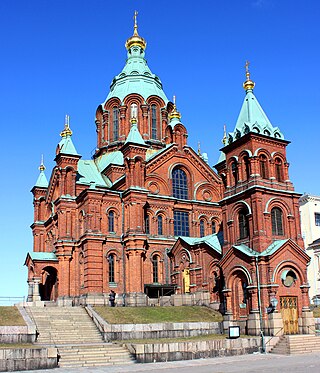
The Orthodox Church of Finland or Finnish Orthodox Church is an autonomous Eastern Orthodox archdiocese of the Ecumenical Patriarchate of Constantinople. The church has a legal position as a national church in the country, along with the Evangelical Lutheran Church of Finland.
Turku and Pori Province was a province of independent Finland from 1917 to 1997. The province was however founded as a county in 1634 when today's Finland was an integrated part of Sweden. It is named after the cities of Turku and Pori.

The 27 municipalities of the region of Southwest Finland in Finland are divided into five sub-regions.

Halikko is a former municipality of Finland that existed until December 31, 2008. On January 1, 2009, the municipality was merged with the larger neighboring Salo. Before the merge Halikko had become a rapidly urbanizing rural area.

Pertteli ; Swedish: S:t Bertils) is a former municipality of Finland. It was consolidated with Salo on January 1, 2009.

Salo is a town in Finland, located in the southwestern interior of the country. The population of Salo is approximately 51,000, while the sub-region has a population of approximately 59,000. It is the 20th most populous municipality in Finland, and the 24th most populous urban area in the country.
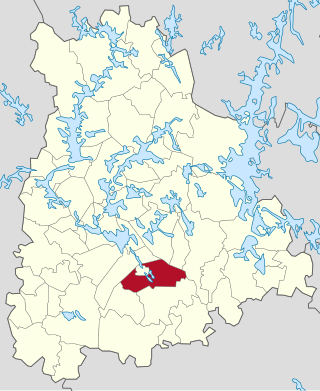
Vanaja is a former municipality of Finland. It was located in Tavastia Proper about 100 kilometres (60 mi) north of Helsinki. It is also speculated that it might have been the name for an Iron Age and early Middle Ages settlement found opposite to the Häme Castle.

Angelniemi is a former municipality of Finland. It became part of Halikko in 1967. It was located on partly on the continent by the Halikonlahti Bay and partly on Kimito Island and is still nowadays the only part of the island where Finnish is the primary language. Today the population of the area is 398, but it rises during the summer because of the summer cottages.

Halikko Church is an Evangelical Lutheran church in Halikko, Finland. The first parts of the church were built in the 13th century, and Halikko Church is one of the 73 medieval stone churches of Finland.
Anna-Liisa Hirviluoto was a Finnish archaeologist. She made her career in the Finnish National Board of Antiquities and its predecessor, the Archaeological Commission positions for 35 years.

Sippola is a former municipality of Finland in the former Kymi Province, now in Kymenlaakso. In 1975, it united with neighboring Anjala to form Anjalankoski, which was later merged into Kouvola in 2009.

Pihlajavesi is a town and a former municipality of Finland, which in 1969 was merged into the municipality of Keuruu, located in the Central Finland region.
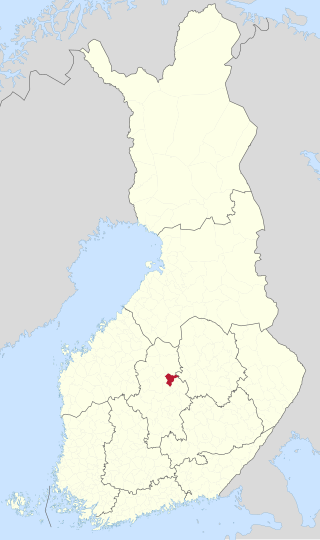
Konginkangas is a settlement and former municipality of Finland in the Central Finland region. It was consolidated with Äänekoski in 1993.

Pohjaslahti is a village and former municipality of Finland at the time of its existence in the Häme Province, now in the Pirkanmaa region. It was divided between Vilppula and Virrat in 1973. Pohjaslahti was the last rural municipality to be created in Finland, which happened in 1941.
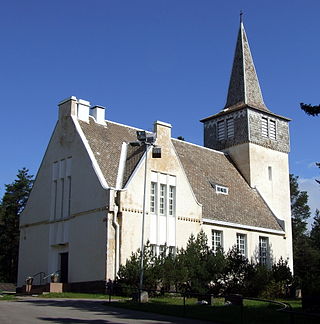
Pattijoki is a settlement and former municipality in Finland. It was a part of the Oulu Province, but now located in the region of Northern Ostrobothnia. It was consolidated with the town of Raahe in 2003.

Saloinen is a former municipality of Finland. It was a part of the Oulu Province, but now located in the region of Northern Ostrobothnia. It was consolidated with the town of Raahe in 1973.
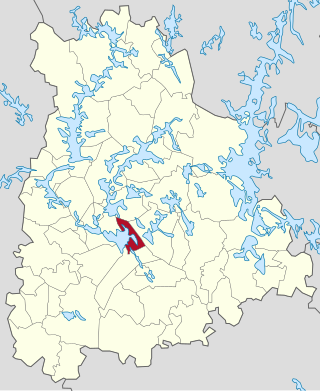
Tyrväntö is a former municipality of Finland in the Häme Province, now in Tavastia Proper. It was consolidated with Hattula in 1971. The northern part of the former municipality was transferred to Valkeakoski in 1978.

Anttola is a village and a former municipality of Finland located in the modern region of Southern Savonia. Together with Mikkelin maalaiskunta, it was consolidated with the town of Mikkeli in 2001.




















